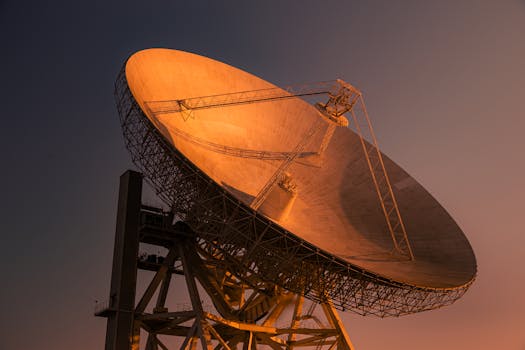
Satellite Telecommunications 2023: Key Developments and What They Mean for the Industry
Satellite Telecommunications 2023 has been a remarkable year for the satellite telecommunications industry, marked by significant advancements and innovations. The Focus Keyword: Satellite Telecommunications is expected to continue growing, driven by increasing demand for global connectivity and the need for reliable, high-speed communication services. In this article, we will delve into the key developments in the satellite telecommunications industry and examine their impact on the sector.
Section 1: Introduction to Satellite Telecommunications

The satellite telecommunications industry has come a long way since its inception, with significant improvements in technology, infrastructure, and services. Today, satellite telecommunications play a vital role in providing connectivity to remote and underserved areas, enabling global communication, and supporting various industries such as maritime, aviation, and emergency services.
Section 2: Key Developments in Satellite Telecommunications 2023

Several key developments have shaped the satellite telecommunications industry in 2023. Some of the notable advancements include:
- Launch of new satellite constellations: Several new satellite constellations have been launched, providing increased capacity, improved coverage, and enhanced services.
- Advances in satellite technology: Significant improvements have been made in satellite technology, including the development of more efficient and powerful satellites, advanced propulsion systems, and enhanced communication systems.
- Growing demand for satellite-based services: The demand for satellite-based services, such as broadband internet, telephony, and navigation, has increased significantly, driven by the growing need for global connectivity.
Section 3: Implications for the Industry

The key developments in the satellite telecommunications industry have significant implications for the sector. Some of the key implications include:
- Increased competition: The launch of new satellite constellations and advances in satellite technology have increased competition in the industry, driving innovation and reducing costs.
- Improved services: The growing demand for satellite-based services has led to the development of more advanced and reliable services, enhancing the overall user experience.
- New opportunities: The satellite telecommunications industry is expected to create new opportunities for businesses, governments, and individuals, enabling them to access global markets, improve communication, and enhance their operations.
Section 4: Challenges and Future Outlook

Despite the significant developments in the satellite telecommunications industry, there are still challenges to be addressed. Some of the key challenges include:
- Regulatory frameworks: The lack of clear regulatory frameworks and standards has hindered the growth of the industry, creating uncertainty and complexity.
- Interference and congestion: The increasing number of satellites in orbit has raised concerns about interference and congestion, potentially impacting the quality of services.
- Sustainability: The industry must address concerns about sustainability, including the management of space debris, energy efficiency, and environmental impact.
In conclusion, the satellite telecommunications industry has undergone significant developments in 2023, with key advancements in technology, infrastructure, and services. As the industry continues to evolve, it is essential to address the challenges and implications, ensuring a sustainable and innovative future for the sector.



